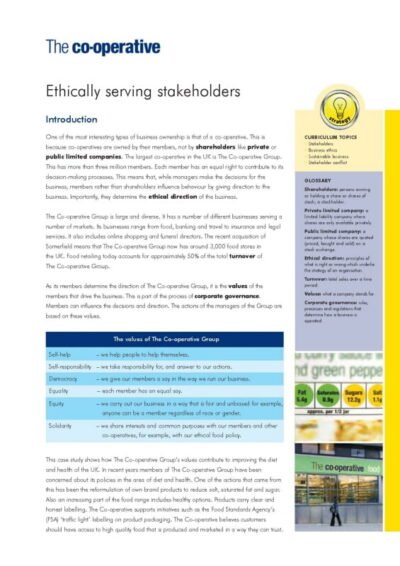In an era where information flows incessantly and consumer preferences shift rapidly, the need for real-time media analytics platforms has never been more pronounced. These platforms serve as vital tools for businesses, enabling them to monitor, analyse, and respond to media content as it unfolds. By harnessing the power of data, organisations can gain insights into audience behaviour, engagement levels, and overall media performance.
This immediacy allows companies to make informed decisions that can significantly impact their strategies and outcomes. Real-time media analytics platforms are designed to process vast amounts of data from various sources, including social media, news outlets, and online forums. They provide a comprehensive view of how content is being received and interacted with across different channels.
As a result, businesses can not only track their own media performance but also gauge the competitive landscape and understand broader industry trends. This capability is essential in today’s fast-paced digital environment, where the ability to adapt quickly can determine success or failure.
Summary
- Real-time media analytics platforms provide businesses with instant insights into their media performance and audience engagement.
- Understanding the importance of real-time media analytics helps businesses make informed decisions and adjustments to their media strategies.
- Key features of real-time media analytics platforms include real-time data tracking, audience segmentation, and performance measurement across multiple channels.
- Real-time media analytics platforms benefit businesses by enabling them to respond quickly to trends, optimize their media campaigns, and improve their overall marketing ROI.
- Real-time media analytics play a crucial role in marketing and advertising by allowing businesses to track campaign performance, understand audience behaviour, and make data-driven decisions for better targeting and messaging.
Understanding the Importance of Real-Time Media Analytics
The significance of real-time media analytics lies in its ability to provide immediate feedback on media campaigns and content performance. In a world where consumer attention spans are fleeting, understanding how audiences engage with content in real time allows businesses to pivot their strategies effectively. For instance, if a particular social media post is generating unexpected levels of engagement, companies can capitalise on this momentum by amplifying the content or creating follow-up materials that resonate with the audience.
Moreover, real-time analytics facilitate proactive decision-making. Instead of waiting for end-of-campaign reports that may arrive weeks after a campaign has concluded, businesses can access live data that informs their actions as events unfold. This immediacy not only enhances responsiveness but also fosters a culture of agility within organisations.
Companies that leverage real-time insights are better positioned to seize opportunities and mitigate risks associated with negative trends or unforeseen challenges.
Key Features of Real-Time Media Analytics Platforms

Real-time media analytics platforms come equipped with a variety of features designed to enhance data collection and analysis. One of the most critical features is sentiment analysis, which employs natural language processing algorithms to assess the emotional tone behind user-generated content. This capability allows businesses to understand public perception and sentiment towards their brand or specific campaigns, providing invaluable insights that can guide future marketing efforts.
Another essential feature is the ability to track engagement metrics across multiple channels simultaneously. This includes monitoring likes, shares, comments, and other forms of interaction on social media platforms, as well as website traffic and user behaviour analytics. By consolidating this data into a single dashboard, businesses can gain a holistic view of their media performance and identify which channels are most effective in reaching their target audience.
Additionally, many platforms offer customisable reporting tools that allow users to generate tailored reports based on specific KPIs, making it easier to communicate findings to stakeholders.
How Real-Time Media Analytics Platforms Benefit Businesses
The benefits of real-time media analytics platforms extend far beyond mere data collection; they empower businesses to enhance their overall operational efficiency. By providing immediate insights into audience behaviour and content performance, these platforms enable organisations to optimise their marketing strategies in real time. For example, if a particular advertisement is underperforming, marketers can quickly adjust their targeting parameters or creative elements to improve engagement rates.
Furthermore, real-time analytics foster a deeper understanding of customer preferences and trends. By analysing data on user interactions and feedback, businesses can tailor their offerings to better meet the needs of their audience. This level of personalisation not only enhances customer satisfaction but also drives loyalty and repeat business.
Companies that effectively utilise real-time media analytics are often able to create more relevant and impactful marketing campaigns that resonate with their target demographics.
The Role of Real-Time Media Analytics in Marketing and Advertising
In the realm of marketing and advertising, real-time media analytics play a pivotal role in shaping campaign strategies and execution. The ability to monitor audience reactions as they happen allows marketers to refine their messaging and creative approaches on the fly. For instance, during a product launch event streamed online, marketers can track viewer engagement metrics in real time, enabling them to adjust promotional tactics based on audience interest levels.
Moreover, real-time analytics facilitate A/B testing by allowing marketers to experiment with different versions of content simultaneously. By analysing which variations perform better in real time, businesses can make data-driven decisions about which creative elements to scale up or modify. This iterative approach not only enhances the effectiveness of marketing campaigns but also maximises return on investment by ensuring that resources are allocated to the most successful strategies.
Choosing the Right Real-Time Media Analytics Platform for Your Business

Selecting the appropriate real-time media analytics platform requires careful consideration of several factors tailored to an organisation’s specific needs. First and foremost, businesses should evaluate the platform’s compatibility with existing systems and tools. Integration capabilities are crucial for ensuring seamless data flow between various applications, which can enhance overall efficiency and reduce manual data entry.
Additionally, organisations should assess the scalability of the platform. As businesses grow and evolve, their analytical needs may change; therefore, it is essential to choose a solution that can adapt accordingly. Features such as customisable dashboards, advanced reporting capabilities, and support for multiple data sources are indicators of a robust platform that can accommodate future requirements.
Furthermore, user-friendliness is paramount; a platform that is intuitive and easy to navigate will empower teams to leverage its capabilities effectively without extensive training.
Case Studies: Successful Implementation of Real-Time Media Analytics
Numerous organisations have successfully harnessed real-time media analytics to drive significant improvements in their operations and marketing efforts. One notable example is Coca-Cola’s use of social media analytics during major sporting events like the FIFA World Cup. By monitoring social media conversations in real time, Coca-Cola was able to identify trending topics and sentiments related to the event.
This insight allowed them to tailor their advertising campaigns dynamically, ensuring that their messaging resonated with fans’ emotions and interests at any given moment. Another compelling case study involves Netflix’s approach to content recommendation and viewer engagement analysis. By employing real-time analytics to track viewer behaviour across its platform, Netflix can provide personalised recommendations based on individual viewing habits.
This not only enhances user experience but also drives higher engagement rates and reduces churn. The company’s ability to analyse vast amounts of data in real time has been instrumental in its success as a leading streaming service provider.
Future Trends in Real-Time Media Analytics Platforms
As technology continues to evolve, so too will the capabilities of real-time media analytics platforms. One emerging trend is the integration of artificial intelligence (AI) and machine learning (ML) into these systems. By leveraging AI algorithms, platforms will be able to provide even deeper insights into audience behaviour and preferences, enabling businesses to predict trends before they fully materialise.
This predictive capability will allow organisations to stay ahead of the curve and make proactive decisions that align with shifting consumer demands. Additionally, the rise of augmented reality (AR) and virtual reality (VR) technologies presents new opportunities for real-time media analytics. As brands increasingly explore immersive experiences for marketing purposes, analytics platforms will need to adapt to capture data from these environments effectively.
This evolution will require innovative approaches to data collection and analysis that account for user interactions within AR and VR spaces. In conclusion, real-time media analytics platforms are poised to play an increasingly vital role in shaping how businesses engage with their audiences in an ever-changing digital landscape. As organisations continue to recognise the value of immediate insights and data-driven decision-making, the demand for sophisticated analytics solutions will only grow stronger.
Real-time media analytics platforms are essential tools for businesses looking to track and analyse their online presence. According to a recent article on businesscasestudies.co.uk, having access to real-time data can help forex brokers make informed decisions and stay ahead of market trends. This is similar to how companies in the casino industry can benefit from real-time analytics, as highlighted in another article on the same website, businesscasestudies.co.uk. Additionally, businesses like William Hill have seen significant revenue boosts thanks to their strong online performance, as discussed in a recent article on businesscasestudies.co.uk. Overall, real-time media analytics platforms play a crucial role in helping businesses across various industries make data-driven decisions and stay competitive in the digital age.
FAQs
What is a real-time media analytics platform?
A real-time media analytics platform is a tool or software that allows users to monitor and analyze the performance of their media content in real-time. This includes tracking metrics such as views, engagement, and audience demographics across various media channels.
What are the key features of a real-time media analytics platform?
Key features of a real-time media analytics platform may include real-time data tracking, customizable dashboards, audience segmentation, content performance analysis, social media monitoring, and integration with various media channels such as websites, mobile apps, and social media platforms.
How can businesses benefit from using a real-time media analytics platform?
Businesses can benefit from using a real-time media analytics platform by gaining valuable insights into the performance of their media content, understanding audience behaviour, making data-driven decisions, optimizing content strategy, and improving overall marketing and advertising efforts.
What are some popular real-time media analytics platforms available in the market?
Some popular real-time media analytics platforms in the market include Google Analytics, Adobe Analytics, Sprout Social, Hootsuite, Brandwatch, and Socialbakers. These platforms offer a range of features to help businesses track and analyze their media content performance in real-time.
How does real-time media analytics differ from traditional media analytics?
Real-time media analytics provides instant and up-to-date insights into the performance of media content, allowing for immediate action and decision-making. Traditional media analytics, on the other hand, may involve delayed reporting and analysis, making it less responsive to real-time changes and trends in media consumption.
 Ethically serving stakeholders (PDF)
Ethically serving stakeholders (PDF) 